Douglas-fir

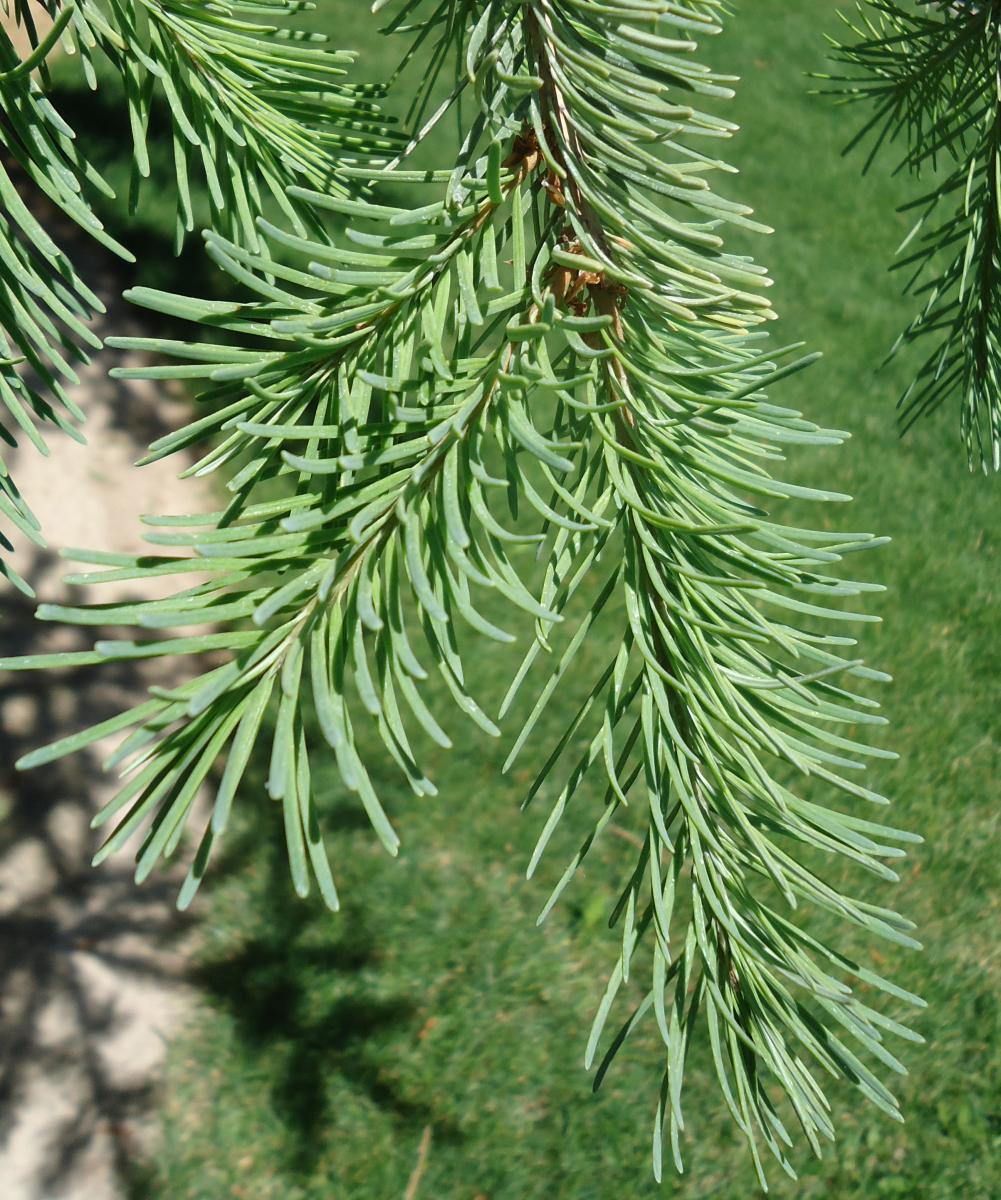
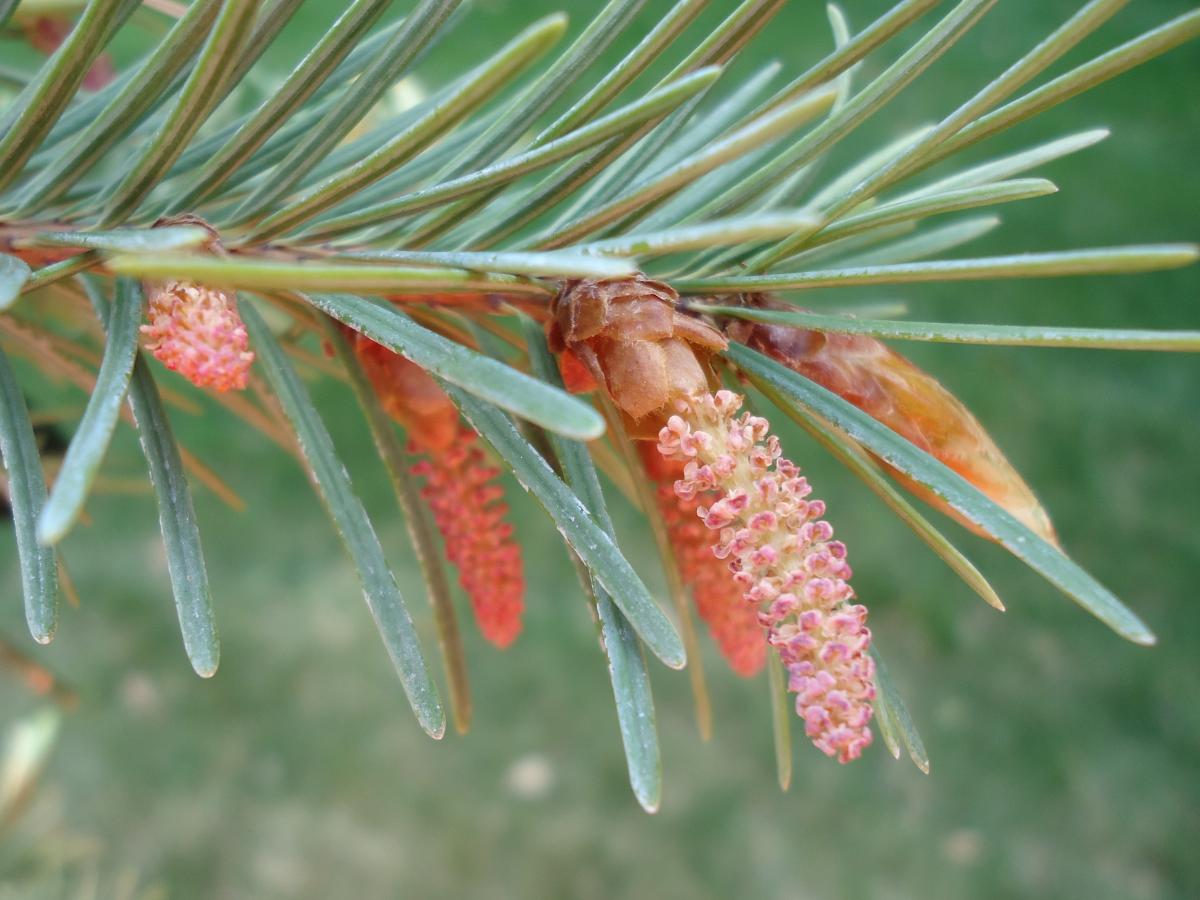
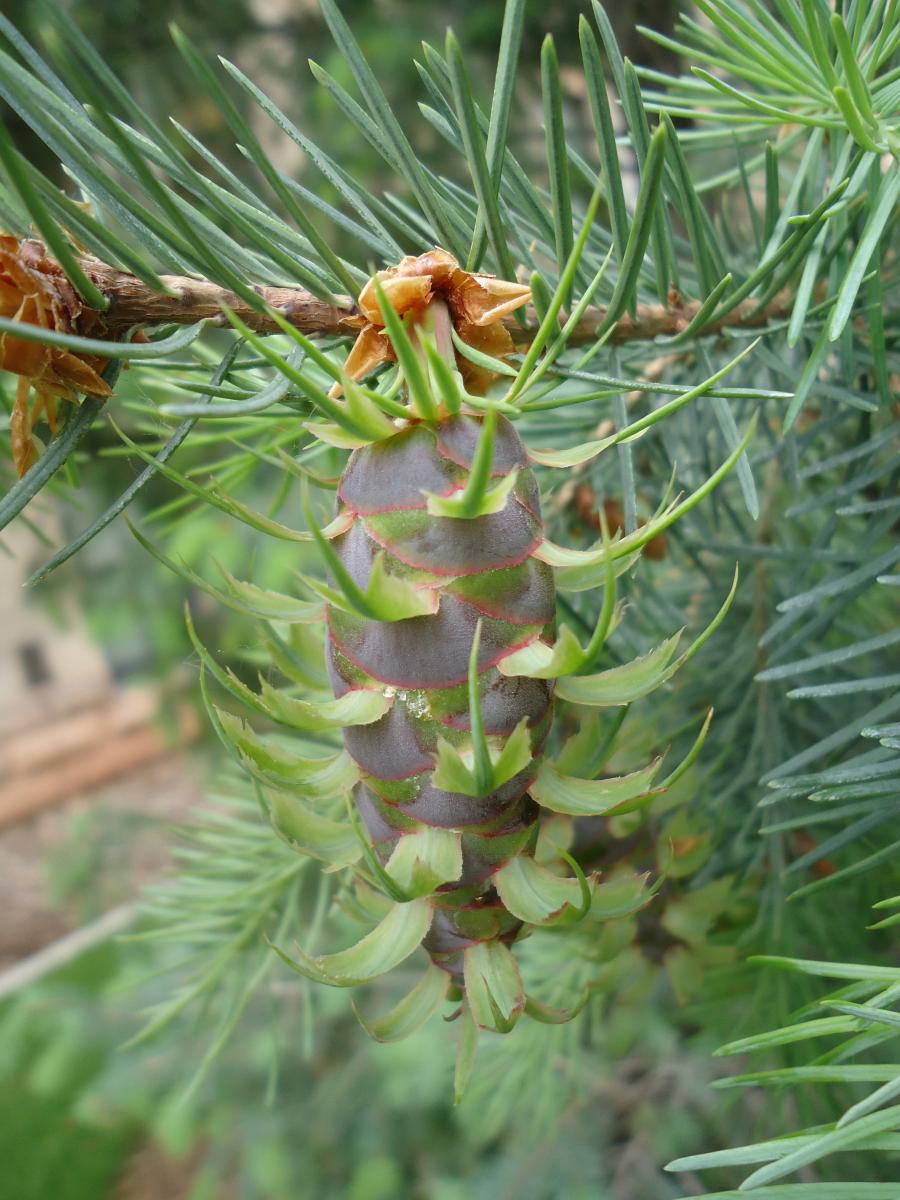
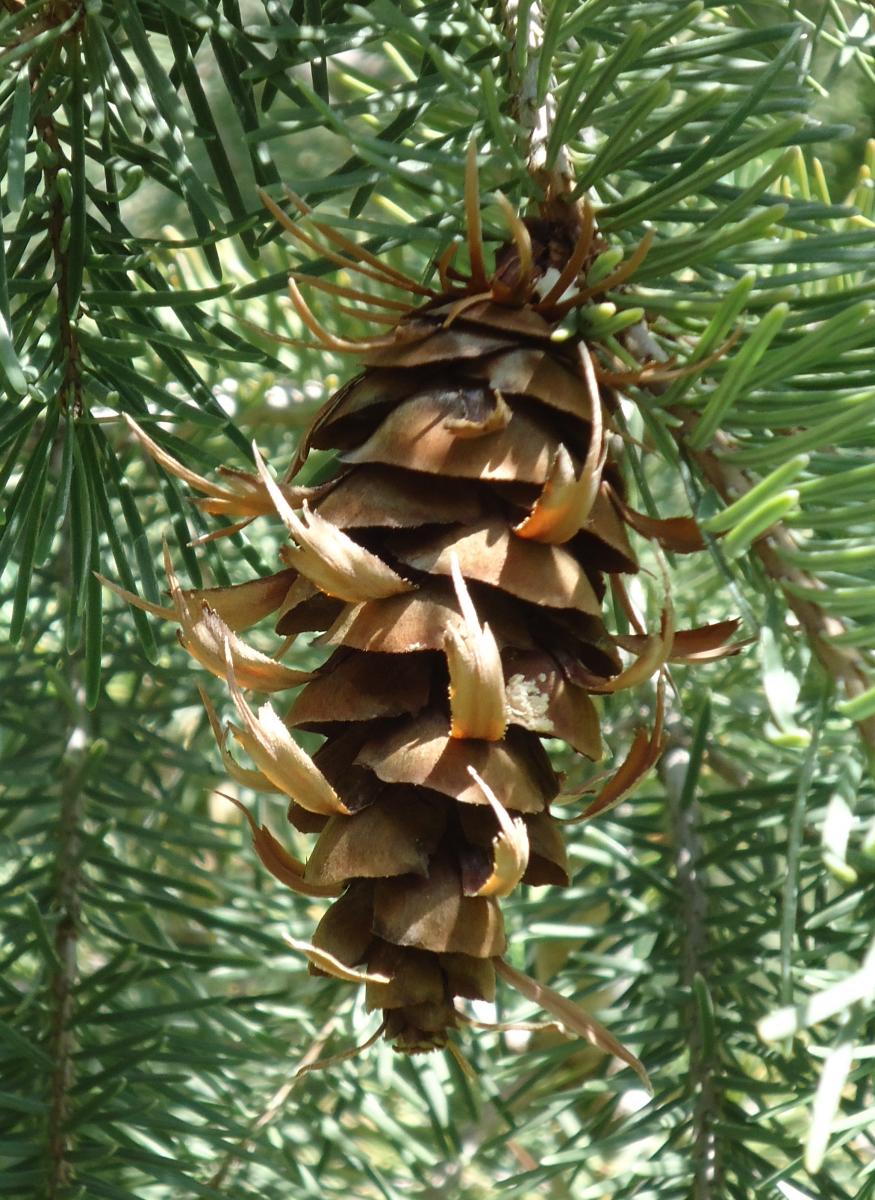
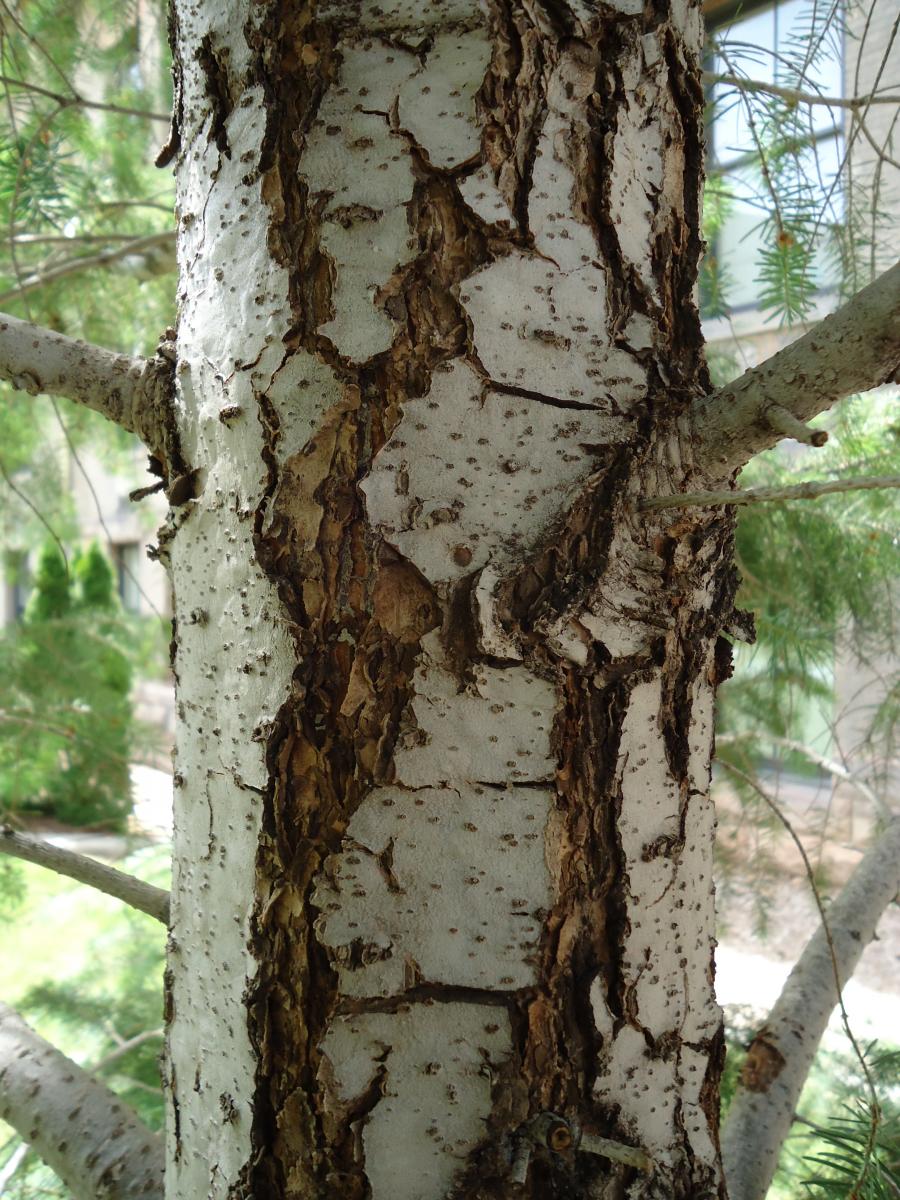
Pseudotsuga menziesii
Leaves: Evergreen. Needles are flat with a slight bend where they attach to the branch. Needles grow all the way around branches and reach 1 to 1½ inches long. They feel soft to the touch and have a distinct fragrance when crushed. Varies from green-blue to grey-green in color. Sometimes yellowish.
Bark/Twigs: Grey-brown bark is smooth on younger branches and develops fissures and ridges with age.
Flowers/Fruit: Inconspicuous flowers in mid-spring. Female cones are 3 to 4 inches long and 1½ to 2 inches wide. They are light brown and have papery bracts sticking out of the cone scales. Scales are hard with smooth edges. Bracts have three prongs and look like a snake tongue or a mouse running into the cone with only its back legs and tail visible. When young, cones are bright violet-red with green bracts. Cones turn medium brown with light bracts when mature.
Mature size and shape: Large. 40 to 80 feet high x 12 to 20 feet wide in landscape conditions. In nature, trees often reach over 200 feet. Open pyramid shape. Lower branches weep or droop slightly, middle branches are horizontal, and upper branches point skyward.
General information/special features: Plant in full sun to partial shade. Moist, well-drained soil is best. Not drought tolerant. Prefers slightly acidic soil. Does not tolerate dry, poor soil or wind. Not a true fir. One of the country's top sources of lumber, providing telegraph/telephone poles and railroad ties when the West was settled.
Landscape use and maintenance: Utah native. Good ornamental evergreen tree. Works in groups but should not be used as a windbreak as branches tend to break. One of the top major Christmas tree species. Average growing rate. Low maintenance. Transplants well.
USDA Hardiness Zone: 4 to 6
Family/Origin: Pinaceae – Pine. Native to the Pacific coastal states and Rocky Mountain states, including Utah. Not a true fir.
Campus Use: Somewhat uncommon. Can be found north of LeRoy Cowles Building (bld 13) or south of Carolyn Tanner Irish Humanities Building (Bld 45).
